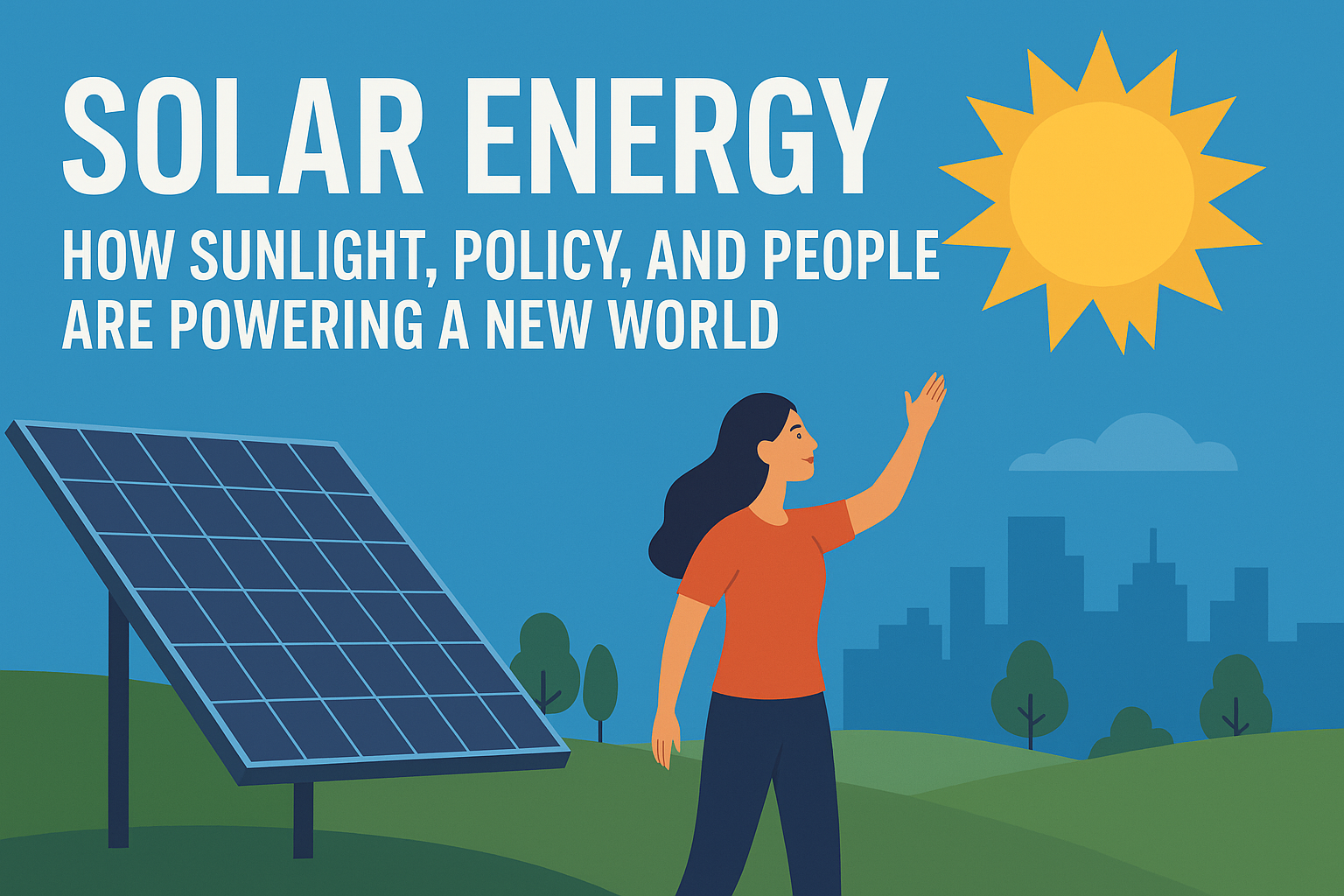In the late 2000s, solar panels were a luxury – seen mostly on high-tech buildings or the rooftops of eco-conscious pioneers.
Fast forward to 2025, and the story has changed dramatically. Solar energy isn’t a futuristic dream anymore – it’s the fastest-growing source of power on Earth, and it’s transforming the way we live, work, and even think about energy.
🌍 Act One: The Global Solar Boom
The numbers are staggering.
In 2024, the world added 597 gigawatts (GW) of solar power – a 33% jump from the year before. To put that into perspective, that’s enough to power almost every home in the United States… twice.
- Solar now supplies 8% of global electricity – up from nearly zero just two decades ago.
- The International Renewable Energy Agency (IRENA) predicts we could hit 1 terawatt (TW) of new solar per year by 2030.
- Every year, these installations are preventing the burning of tens of millions of tons of coal – a win for the planet’s lungs.
And while the revolution is global, two countries are stealing the spotlight.
🇨🇳 Act Two: China, the Solar Superpower
If solar energy were an Olympic sport, China would be taking home the gold – every year.
In 2024, it installed a mind-blowing 329 GW of solar, accounting for more than half of the world’s new capacity.
But here’s the twist: growth is so rapid that in some regions, like Tibet, the grid can’t handle it all – 30% of solar power is wasted simply because there’s nowhere for it to go.
It’s a reminder that the solar race isn’t just about producing energy – it’s about building the systems to store and distribute it effectively.
🇮🇳 Act Three: India’s Rise with the Sun
India’s solar journey is less about dominance and more about transformation.
In January 2025, the country reached 100 GW of installed solar capacity – a milestone once thought decades away.
- 24.5 GW added in 2024 alone, setting a national record.
- Rooftop solar saw a 53% surge, proving that change is happening at the household level.
- The shift saved 57 million tons of coal in one year.
And with 74 GW of domestic manufacturing capacity coming online, India isn’t just consuming solar – t’s becoming a global producer.
🌞 Act Four: The People’s Power
This revolution isn’t just about governments and corporations.
It’s about the farmer in Rajasthan installing solar-powered irrigation pumps under the PM-KUSUM scheme, cutting diesel costs and selling excess energy back to the grid.
It’s about the Delhi family that went solar through the PM Surya Ghar Muft Bijli Yojana, slashing their electricity bills while getting 300 units of free power each month.
🏛 Act Five: The Government as the Co-Star
Here’s the part of the story where policy becomes the hero. India’s government is supercharging the solar shift with subsidies and schemes:
- PM Surya Ghar Muft Bijli Yojana – Subsidies up to ₹78,000 for rooftop solar, plus free power every month.
- MNRE Rooftop Solar Subsidy – 40% subsidy for systems up to 3 kW, 20% for larger systems.
- PM-KUSUM – 60% subsidy + 30% loan for solar pumps, empowering farmers.
- Ultra Mega Solar Parks – Utility-scale projects with 500 MW+ capacity.
- State-Level Boosters – Delhi, Haryana, Bihar, and others adding their own incentives on top of national programs.
These aren’t just numbers – they’re the push that makes solar financially irresistible for millions.
⚡ Act Six: Shadows in the Sunshine
Every great story has its challenges:
- In Kerala, mismatched consumption patterns are causing grid strain and losses of ₹500 crore.
- In the U.S., policy rollbacks have slowed solar growth from 33% to 10% year-on-year.
But these are growing pains, not roadblocks. The momentum is too strong to stop.
🚀 Final Act: Your Role in the Solar Story
Whether you’re a homeowner, a business leader, or just someone who likes the idea of clean, affordable energy, the solar revolution is at your doorstep.
It’s cutting emissions, creating jobs, and giving people control over their own power supply.
The big question is:
In 2030, will we look back and say, “That was the decade we broke free from fossil fuels”?
The sun is giving us the best deal in history. All we have to do is take it.





